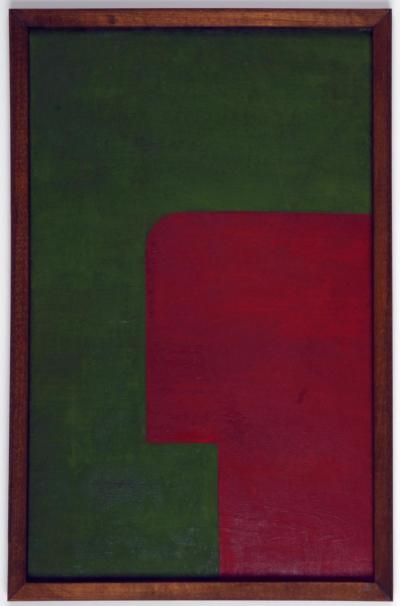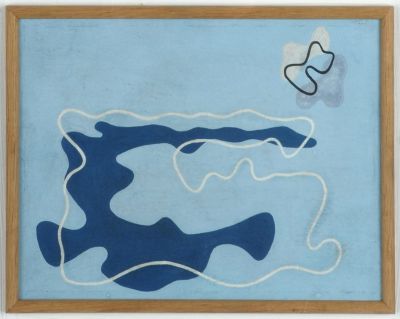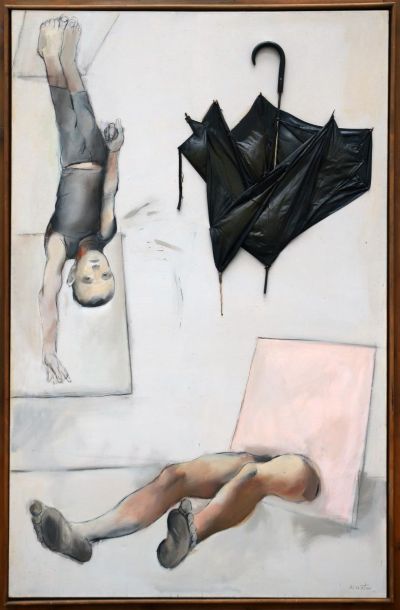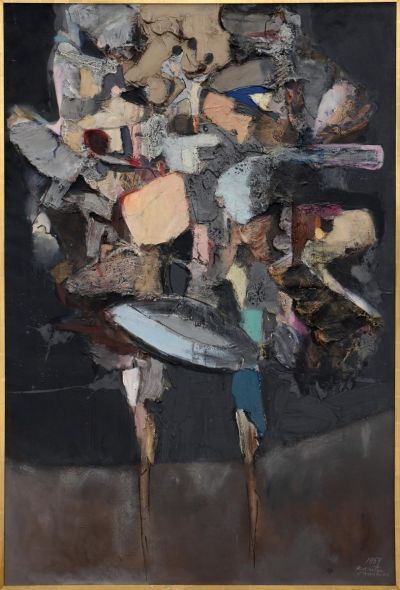Polish art and artists in the Bochum Art Museum (Kunstmuseum Bochum)

Relationships, especially with the Polish art scene have now become so “normal” that communications between artists and curators are no different in principle from those in the West like the Netherlands or France. My first contact with contemporary art in Poland began in 1990 when I visited Warsaw on the occasion of a joint project between the Museum Bochum and the Warsaw National Museum. Here, thanks to my colleague Dorota Monkiewicz, I was lucky enough to be able to immerse myself in a vibrant arts scene heading in new directions. During the period of martial law in Poland artists were taking their art onto the streets and they played a decisive role in bringing down the system. Above all my meetings with representatives from the Warsaw artists’ “Gruppa“ led me to decide to conceive an exhibition in Bochum of contemporary Polish art drawn from the various different art scenes in Poland. The upshot was that in 1993 we presented works by artists from Kraków, Lublin, Poznan and Warsaw under the ironic and metaphoric title “UN-VOLLKOMMEN” (Translator’s note: in German this is a pun on “imperfect” and “unwelcome”). Whilst researching the project I came across the later “documenta” artist Mariusz Kruk, whom I would have loved to have included in my Bochum presentation. He was delighted at my enthusiastic response to his work but declined my invitation on the grounds that he did not want to be regarded as a Polish artist but “only” as an artist. This generally understandable attitude further threw a problematic light on his position as a Pole and member of a former Eastern block state. I could thoroughly appreciate his argument, for since the start of the Cold War the Museum Bochum had continually been in danger of stigmatisation for its orientation towards Eastern Europe. For this reason I presented the works of Zofia Kulik for the first time in 1994 in Bochum in an international exhibition on the theme of “Nature in Still Life – Natura Morta“. We were later lucky enough to be able to purchase the large-format photographs that she had specially prepared for the exhibition under the title „Who is Conquering the World“. When I took over the post of director of the Museum Bochum in 1997 I decided to continue with this tradition, despite “well meant advice“ to stop focusing on Eastern Europe, but to accentuate it in an international context. In 1998 a major joint project entitled “Transfer Poland“[1] was created as part of a range of international exhibitions presented by the Wuppertal Kultursekretariat. The project came just at the right time for me to demonstrate this “new continuity”. Grants were given to artists from NRW to visit Poland for several months. And vice versa artists from Poland came to towns and cities in NRW whose museums were participating in the project. Their works were exhibited both here and there. From this exhibition we purchased the photo installation entitled “Memory/Watchwords” (1997) by Marta Deskur.
Because of the strict budgetary limitations imposed on local authority museums in the Ruhrgebiet we have been compelled to reduce purchases, and our collections are growing more slowly. As far as exhibitions are concerned Polish art now plays a “normal” role; i.e. we are constantly presenting works by individual artists in our solo and theme-based exhibitions. Even before her invitation to “documenta 12” in 2007 our museum in Bochum presented the first major individual exhibition of works by Zofia Kulik in Germany. A rapid succession of works by Mirosław Bałkas could also be seen in Bochum; as for example – with an eye to the history of our museum with its orientation towards Eastern and Central Europe – in the exhibition entitled “A PAIR OF LEFT SHOES – Reality Check in East Europe” (2009), presented in conjunction with the Museum of Contemporary Art in Zagreb, whose theme was the “post-socialist” art scene. In her solo exhibition entitled “Nomanslight: Ursula Schulz-Dornburg. Photographs 1973-2011” (2011) the artist included a large iron sculpture by Mirosław Bałka as a central item, thereby provoking an remarkable dialogue.
Almost as a matter of course we are continually presenting individual or group exhibitions of work by Polish artists living in Germany like Danuta Karstens, Wika Mikrut and Andrzej Kuczmiński, and here their country of origin mostly remains unnoticed.
Looking to the near future we are discussing a joint project for 2015 with the Breslau Contemporary Museum (Muzeum Współczesne Wrocław) with regard to an exhibition on the art scene in Breslau after 1945.
To sum up, the collections and exhibitions of the Kunstmuseum Bochum are now conducted on “normal” artistic criteria and not, as before, on the historical grounds of an artist’s special status.
Hans Günter Golinski, June 2014
[1] Tomasz Bajer, Marta Deskur, Adam Garnek, Leszek Golec, Marek Kijewski & Kocur, Katarzyna Kozyra, Konrad Kuzyszyn, Leszek Lewandowski, Agata Michowska, Andrzej Syska, Marek Targoński



![Jan Tarasin, Großer Strand [Big beach] Jan Tarasin, Großer Strand [Big beach] - 1964, oil on canvas, 95 x 125 cm](/sites/default/files/styles/width_100_tiles/public/assets/images/bochum05.jpg?itok=4NcC-MNC)


